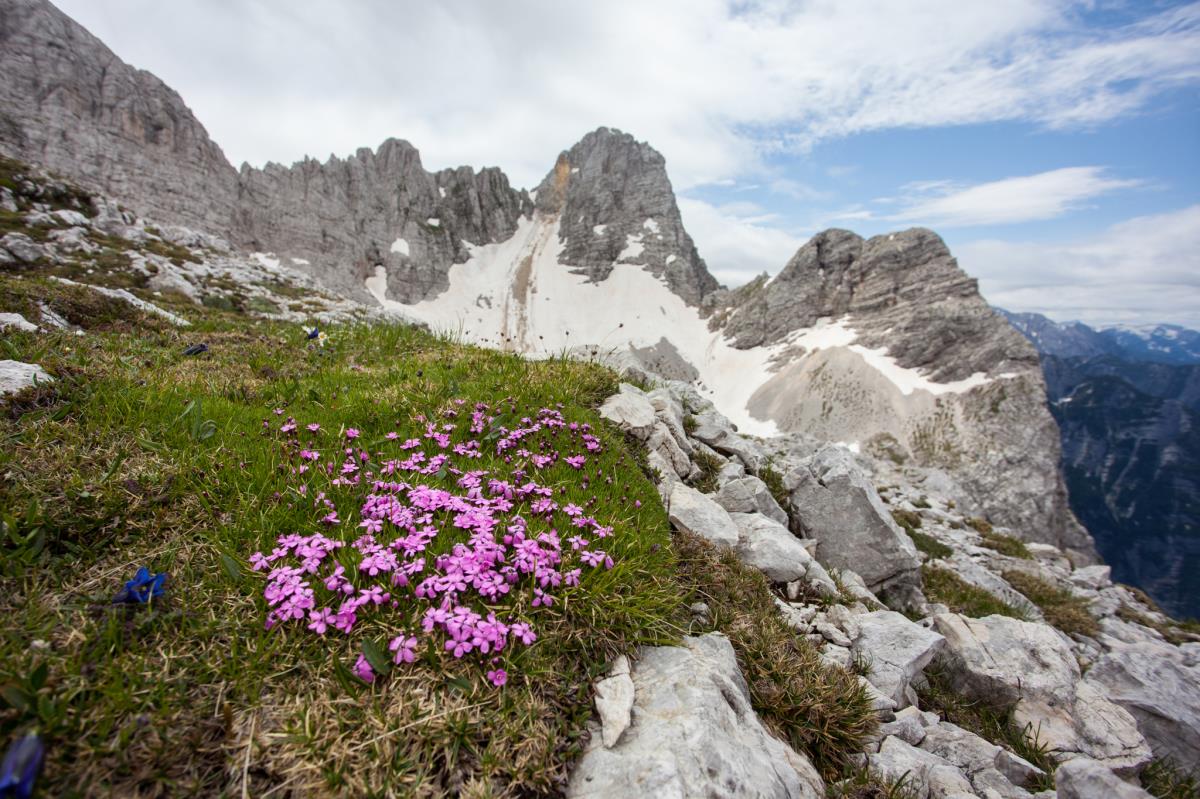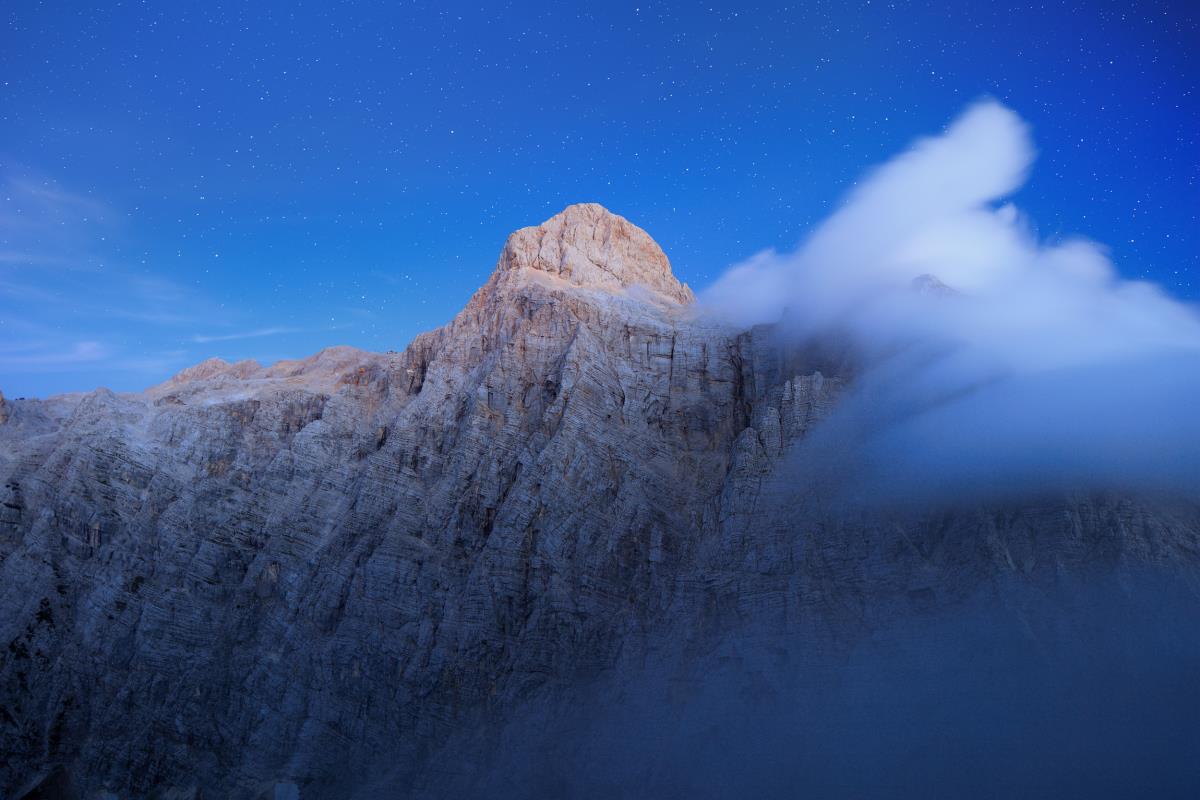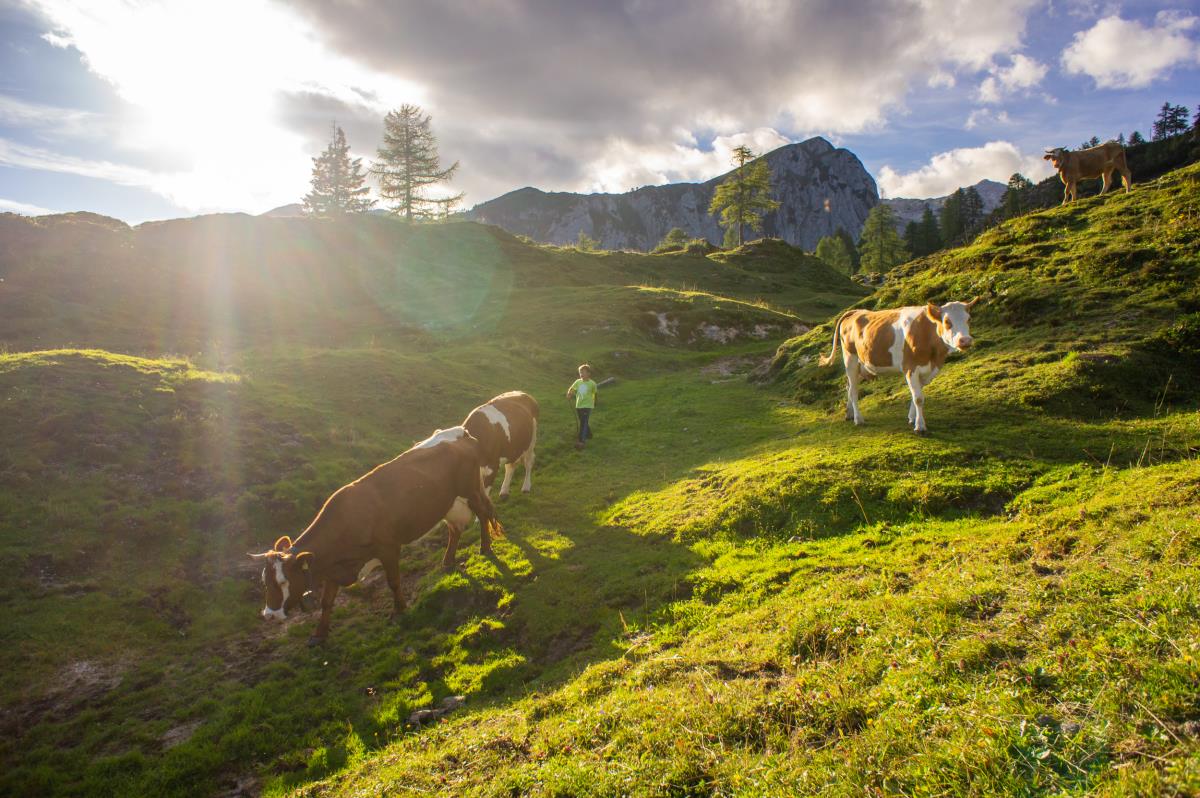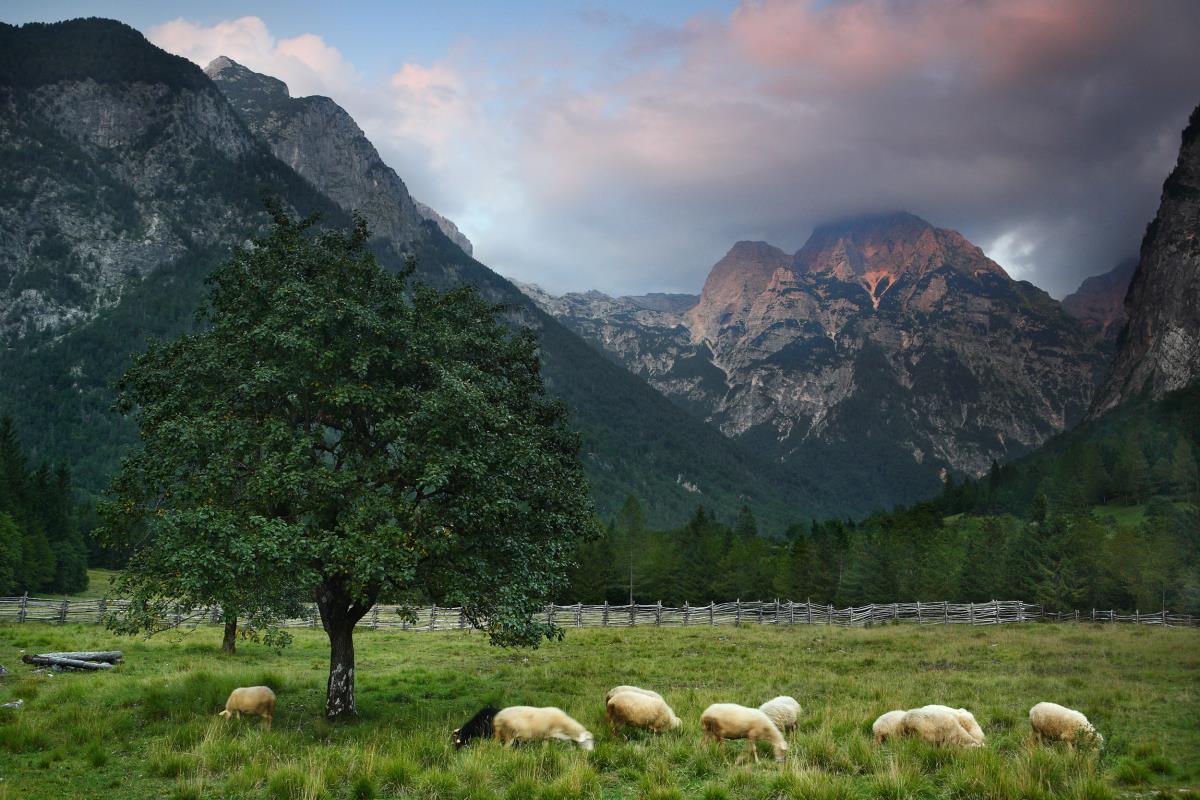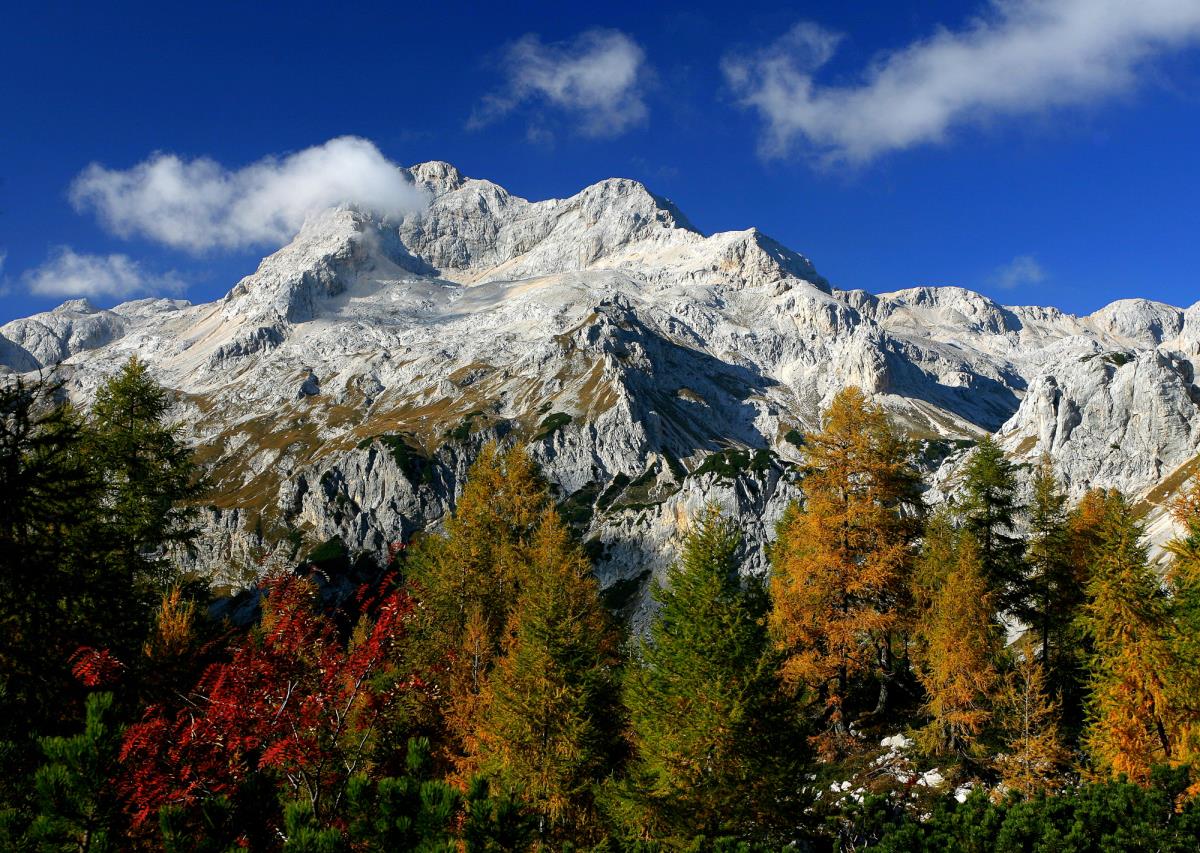TRIGLAV NATIONAL PARK
Category of protection: National park IUCN category II (national park) and Category V (protected landscape)
Year of protection: 1981
Location
Triglav National Park extends along the Italian border and close to the Austrian border in the north-west of Slovenia, that is, in the south-eastern section of the Alps. The park covers 840 square kilometres, or 4% of the territory of Slovenia.
History
Triglav National Park is one of the oldest European parks; the first protection dates back to 1924 when the Alpine Conservation Park was founded.
TNP history milestones:
1908 – first proposal by Prof. Albin Belar; unfortunately, the idea was not realized
1924 – The Alpine Conservation Park in Triglav Lakes Valley was founded (1600 ha)
1961 – The decree promulgating Triglav Lakes Valley as Triglav National Park (2000 ha)
1981 – the Law on Triglav National Park defined the park's present borders
2010 – Adoption of the new TNP Act In 2003 the UNESCO office in Paris adopted a Decision to include the Julian Alps and Triglav national park into the international network of biosphere reserves MAB (Man and Biosphere)
In 2009 Triglav National Park and the Regional Nature Park of the Julian Prealps Park received a Transboundary Charter by the The Europarc Federation. The Transboundary Ecoregion Julian Alps is the official name of the territory involved, including the two parks but also the area of the Slovenian MAB Unesco Julian Alps.
TNP history milestones:
1908 – first proposal by Prof. Albin Belar; unfortunately, the idea was not realized
1924 – The Alpine Conservation Park in Triglav Lakes Valley was founded (1600 ha)
1961 – The decree promulgating Triglav Lakes Valley as Triglav National Park (2000 ha)
1981 – the Law on Triglav National Park defined the park's present borders
2010 – Adoption of the new TNP Act In 2003 the UNESCO office in Paris adopted a Decision to include the Julian Alps and Triglav national park into the international network of biosphere reserves MAB (Man and Biosphere)
In 2009 Triglav National Park and the Regional Nature Park of the Julian Prealps Park received a Transboundary Charter by the The Europarc Federation. The Transboundary Ecoregion Julian Alps is the official name of the territory involved, including the two parks but also the area of the Slovenian MAB Unesco Julian Alps.
Tourism
Owing to its uniqueness and importance, Triglav National Park requires and deserves respectful visitors. Less noise, fewer cars, and lower carbon footprint are a guarantee for more clean air and peace. Enjoy the abundance of fresh air and hit the trail in a different way: by bike, train, bus or on foot. Be friendly to nature and preserve it just the way it is.
Endemic animal species, including the wolf, bear and lynx, and bountiful diversity of flora that boasts 19 endemites. In this land of myths and legends, people still live in perfect harmony with nature, attuned to its tradition. Vast, enchanting forests, deep-carved valleys, high-altitude pastures, and crystal clear waters that flow down from the slopes of the country's highest mountain, Triglav, into rivers, lakes, and brooks.
Endemic animal species, including the wolf, bear and lynx, and bountiful diversity of flora that boasts 19 endemites. In this land of myths and legends, people still live in perfect harmony with nature, attuned to its tradition. Vast, enchanting forests, deep-carved valleys, high-altitude pastures, and crystal clear waters that flow down from the slopes of the country's highest mountain, Triglav, into rivers, lakes, and brooks.
Natural values
Fauna, flora: With its diverse climate and a wealth of landscape types, Triglav National Park is home to around 7,000 plant and animal species, from tiny insects and freshwater fish to majestic red deer and a proud golden eagle.
Ecosystems: The Park accommodates a wide diversity of ecosystems – vast forests, high mountain ridges and crystal clear waters.
Ecosystems: The Park accommodates a wide diversity of ecosystems – vast forests, high mountain ridges and crystal clear waters.
Sights
- Triglav, the highest mountain in the heart of the park, which is also the highest summit in Slovenia (2864 m)
- Triglavska Bistrica Trail runs along Triglavska Bistrica River to the head of the Vrata Valley.
- The Soča Trail is a nature trail taking visitors to Triglav National Park along the Soča River from its source towards Bovec.
- The Goreljek Bog Nature Trail runs around the Goreljek bog, which is located on Pokljuka plateau.
- The Mostnica River has carved a 2-kilometre gorge just above the village of Stara Fužina
- The Tolmin Gorges, are the lowest-lying point of Triglav National Park
- The Radovna Cycle Route runs along the Radovna Valley, from Krnica near Zgornje Gorje to the Pocar Homestead
- The Pocar Homestead at Zgornja Radovna, which has been turned into museum and is one of the oldest homesteads in Triglav National Park and it introduces the visitor to the life, work and architectural heritage of the past centuries.
Known about the unknown
Triglav National Park ranks among the most watered areas in Slovenia and Europe. Alpine lakes are the pearls of Triglav National Park. The highest-lying lake in Triglav National Park is Zgornje Kriško jezero at 2150m above sea level.
Two important European rivers, the Sava and the Soča, take their source in Triglav National Park. The Soča flows into the Adriatic Sea, and the Sava drains into the Black Sea. The dividing line between the two watersheds runs through the heart of Triglav National Park.
The diversity of geological phenomena and processes is outstanding and provides the basis for the equally exceptional biodiversity of the area.
The largest larch tree in the Park has a circumference of 422 cm and is 1050 years old.
Raised bogs are a special water ecosystem. They are extremely rare in Slovenia and deserve a special protection status. Raised bogs can support plants adapted to harsh living conditions.
Triglav National Park has an Alpine climate, with cold winters and short summers. The all-time lowest temperature of -49 °C was measured at the bottom of the frost hollow on Lepa Komna in 2009.
People who live, work and create in this protected area are the soul of the national park. Mountain farming is a way of life, a harsh reality of survival and a building stone of the Park.s exceptional cultural landscape.
Two important European rivers, the Sava and the Soča, take their source in Triglav National Park. The Soča flows into the Adriatic Sea, and the Sava drains into the Black Sea. The dividing line between the two watersheds runs through the heart of Triglav National Park.
The diversity of geological phenomena and processes is outstanding and provides the basis for the equally exceptional biodiversity of the area.
The largest larch tree in the Park has a circumference of 422 cm and is 1050 years old.
Raised bogs are a special water ecosystem. They are extremely rare in Slovenia and deserve a special protection status. Raised bogs can support plants adapted to harsh living conditions.
Triglav National Park has an Alpine climate, with cold winters and short summers. The all-time lowest temperature of -49 °C was measured at the bottom of the frost hollow on Lepa Komna in 2009.
People who live, work and create in this protected area are the soul of the national park. Mountain farming is a way of life, a harsh reality of survival and a building stone of the Park.s exceptional cultural landscape.
The area is open for visitors:
- Infocenter Triglavska roža Bled
- Center TNP Bohinj
- TNP Info Centre Dom Trenta
- Pocar Homestead
- Info point tourist information centre Kobarid
- Slovenian Alpine Museum
This area is managed by Triglav National Park Public Institution
- Address: Ljubljanska cesta 27, SI-4260 Bled, Slovenia
- Telephone number: +386 4 578 0200
- Official website: www.tnp.si
- Social networks:
https://www.facebook.com/triglav.national.park.official/
https://www.instagram.com/triglav.national.park/
https://www.youtube.com/channel/UC8hWSbpW2GwBE5lM-vZ-DJg
